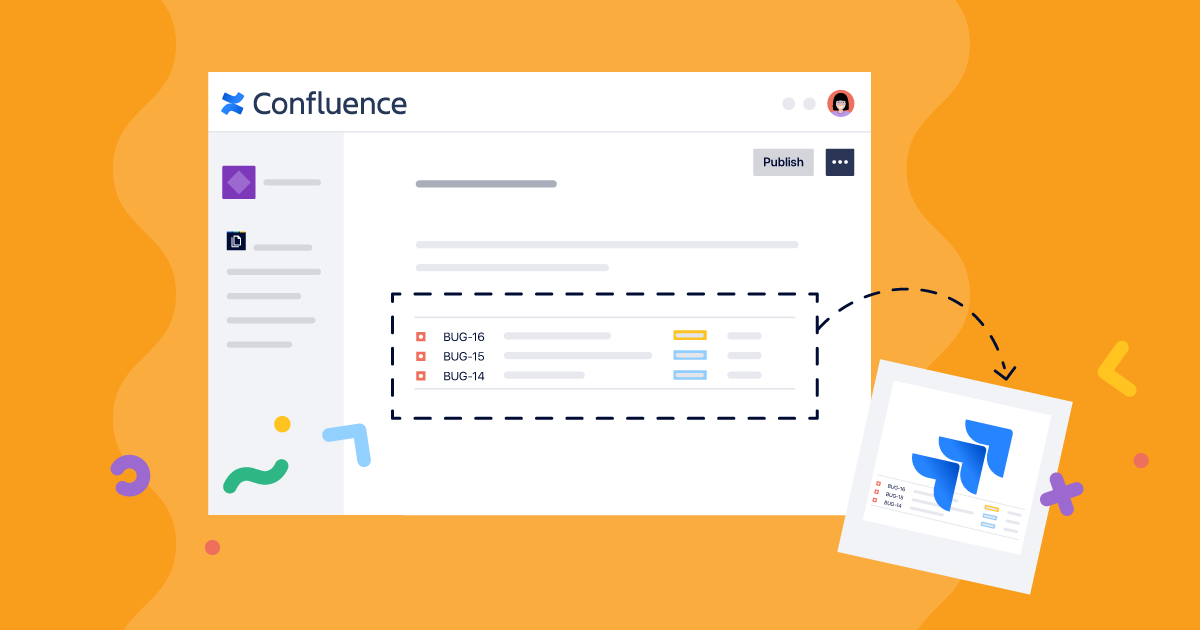How to Manage Regulatory Submissions with Confluence and Jira
|
Meta Information |
|
Explanation |
|---|---|---|
|
metaDescription |
Create and deliver great documentation in Confluence – even for detailed technical products or official regulatory submissions! |
Field Type Text Help Should be max 120 characters. This is shown on the result page e.g. on Google. |
|
shareTitle |
How to Manage Regulatory Submissions with Confluence and Jira |
Field Type Text Help This title is shown when the blog post is shared on social media. |
|
shareDescription |
Collaboration across Confluence and Jira is now even better with the ability to preserve snapshots of Jira issues across versions of your Confluence documentation. |
Field Type Text Help Should be 1-2 sentences. This text is shown if the blog post is shared on social media or other platforms. |
|
shareImage |

|
Field Type PNG/JPG |
|
teaserImage |
|
Field Type SVG |
|
teaserText |
Collaboration across Confluence and Jira is now even better with the ability to preserve snapshots of Jira issues across versions of your Confluence documentation. |
Field Type Text Help Should be 1-2 sentences. |
|
author |
Field Type Link to page Help The author needs to be a page link from the team page. |
|
|
heading |
|
Field Type Text Help If your blog post title should change for the following reasons:
Example: The title of the blog post is - Heading property = Announcing Orderly: Replace Confluence Page Properties with Notion-like Databases |
|
textToSpeech |
|
Field Type mp3 Help Please ping Steffen to create the file. |
Product teams working with Confluence and Jira have the benefit of two collaborative and highly-integrated tools. They enable multiple areas of a team to collaborate on product development, documentation, feature concepts, and more – all without much context switching or information silos.
This collaboration just got even better with the ability to preserve snapshots of Jira issues across versions of your Confluence documentation.
The latest integration between K15t’s Scroll Documents for Confluence and RadBee’s Jira Snapshots for Confluence enables product teams – especially those in highly regulated environments – to save and maintain multiple versions of their documentation across both Confluence and Jira.
This integration will save your team time in creating and maintaining your docs. It also grants you peace of mind that the state of your documentation is exactly as it should be, whether that’s for an official regulatory submission or to preserve an accurate archive of the documentation over your product’s evolution.
Confluence Versioning Meets Jira Snapshots
As we all know, the best product documentation is written as a team. But the information you need to create that documentation is likely scattered across departments and tools.
Software engineers work in Jira, while product managers and technical writers who compile the documentation work in Confluence. Thankfully, Jira macros can dynamically display the information you need from Jira right in a Confluence page so that your documentation is always connected and up-to-date.
For complex or technical products, you’ll need a way to manage the lifecycle of your documentation. If your product exists in a highly regulated environment, this often requires your team to preserve versions and keep a strict record of changes to your documentation for things like regulatory submissions and approvals.
This is difficult to do with Confluence and Jira alone. Documentation spanning more than a single Confluence page creates a problem since versioning and comparison only exist on a single-page level. At the same time, the content displayed in a Jira macro can’t be preserved across versions due to its dynamic nature.
That’s where Scroll Documents and Jira Snapshots for Confluence come in:
-
Scroll Documents: Brings advanced content management to Confluence, enabling you to control and compare versions, track changes, and publish to the web or offline file formats.
-
Jira Snapshots: Take snapshots of your Jira data and share it right in Confluence for better transparency and faster updating of your team’s reports.
Used together, you can guarantee that your product documentation is preserved exactly as it should be when saving versions – plus all the extras these apps can provide, like version diffing, change tracking, export and publishing integrations, and more.
How Medical Device Companies Use Confluence and Jira to Deliver Regulatory Submissions
Product teams that create and deliver software or components for medical devices have to adhere to strict regulations in order to operate. These regulations include frequent regulatory submissions and requests for approval from various authorities. Not only is the process time-consuming, it also requires a lot of detailed documentation to be created along the way.
Confluence and Jira are invaluable tools for keeping these types of product teams running. Software developers can manage their contributions in Jira, while product managers who are creating the documentation can gather the information they need in Confluence, such as:
-
Technical specifications
-
Risk management reports
-
Traceability and test reports
Some of that information may originate in Jira, but thanks to Jira Snapshots, static reflections of this data can be included into the submissions in Confluence.
Jira Snapshots helps create the various pages of documentation, like a test report or risk management report, while Scroll Documents makes it possible to compile these singular pages into one neat submission. That document then represents the individual product version which can then be submitted to the authorities. The file can even be exported directly from Confluence to PDF or Word with a custom look and feel in just seconds.
See It In Action
Want to see how the process works? Watch a short demo →
Thanks to these apps, whenever an authority requests additional information, it’s easy for the product team to refer back to each submitted version, guarantee its state at the time of submission, and update it if required.
Ready to Get Started?
Scroll Documents and Jira Snapshots bring much-needed traceability and control to product teams that create their documentation in Confluence. Want to test the solution for your team?
This article was written in collaboration with our friends at RadBee – Quality management experts, Atlassian partner, and the creator of Jira Snapshots for Confluence.

.png)